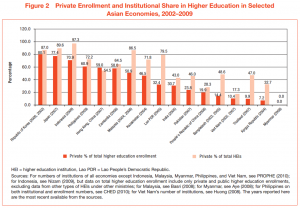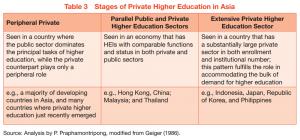Author Archives: hy2483
Flow of International Students in Asia
Hi Class! This time I present data relevant to our previous classes – flow of international students in Asia.
This excel below shows from which country in Asia to which country (mostly OECD) students are enrolled abroad at a tertiary level. (e.g. 90245: number of Chinese students studying in Australia)
(Reference: OECD Statistics, http://stats.oecd.org/)
And not surprisingly, aside from U.S. and UK, this revealed one important country with regard to international students’ flow, which could be categorized into Asia but had not been covered by this particular class – Australia. I wanna focus on this country in this blog because I believe we cannot discuss students’ flow within Asian countries without referring to Australia.
Here are some excerpts from an interesting article elaborating difficult situation surrounding this country
“In 2015, there were 272,095 higher education international students in Australia who contributed almost A$12.5 billion to the economy.”
“In Australia, however, international students have few scholarship opportunities, and no local jobs specifically waiting for them after graduation.”
“One aspect of this discussion policymakers might want to consider is becoming host to satellite campuses from world-renowned universities. So far only Carnegie Mellon has an offshore campus in Australia. Having such satellite campuses creates not only diversity and internationalisation in the Australian higher education space, but also provides other benefits. These include more competitive choices of institutions on Australian soil, as well as greater opportunities for students to move between countries on exchange. Having top Asian universities set up campuses in Australia promotes increased flows of top students and staff. This would help strengthen Australia’s position in the region as a high-quality education hub.”
So here clearly we can see another type of dilemma – different from Japan (attracting foreign students into homogeneity), South Korea (getting out of brain drain), Hong Kong and Taiwan (aiming to become international hub in Asian HE). Maybe Australia’s situation is somewhat similar to Singapore, but still a lot of differences in terms of country size and its historical context etc.
Let us know any thoughts or comments. Thank you for reading!
(Reference: Rising players in higher education: the countries to watch out for)
http://theconversation.com/rising-players-in-higher-education-the-countries-to-watch-out-for-62964
Gender Parity Index and more
The reform of the Law Schools in Japan/Korea and the relation to the Western Model
Hi all! This is Hiro.
Thank you for yesterday’s amazing discussion about Law School reforms!!
Below is my presentation slide. The key points are;
Korea: strong quantity control by government, but delay abolishing traditional bar exam for three times, also corruption
Japan: loosened quantity control, preliminary exam as a shortcut, mismatch between demand and supply
Both: Inconsistent policy
Please share any comment or further insight about law school reforms in these two or any other countries. Thank you!

